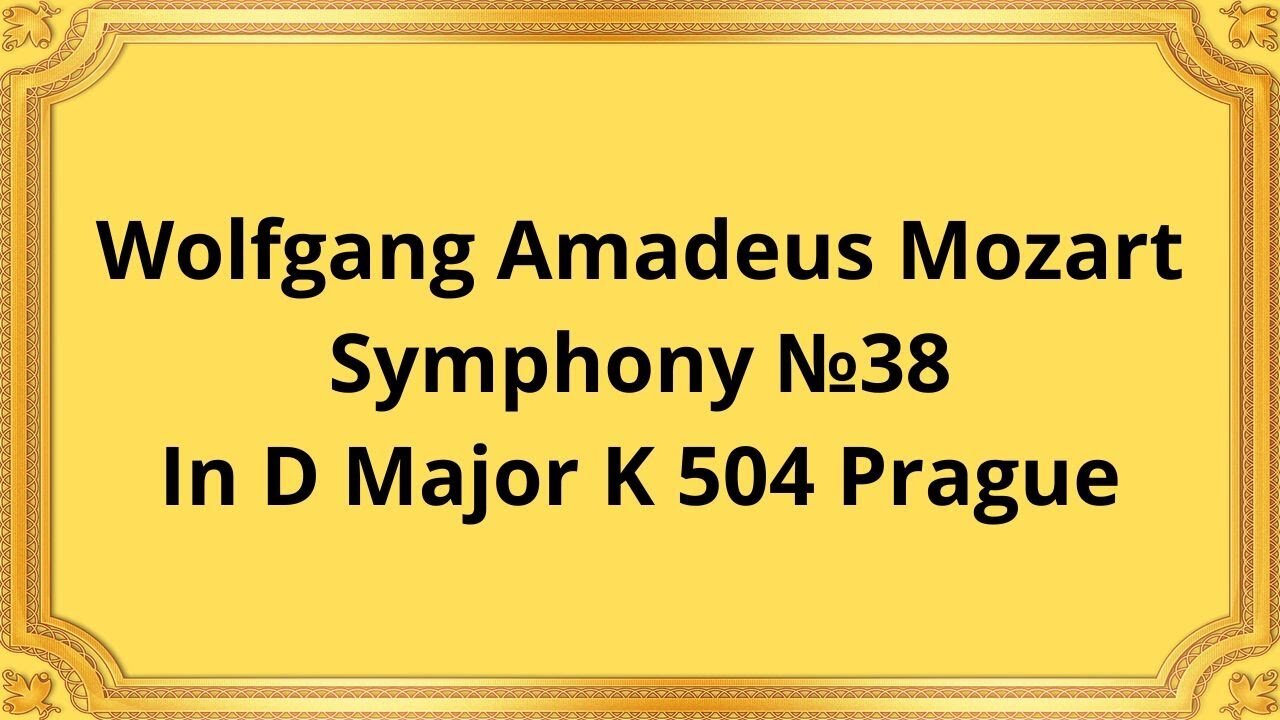Premium Only Content

Wolfgang Amadeus Mozart Symphony №38 In D Major K 504 Prague
#Mozart#Chamber_music#Classical_music#Symphony#Musical_composition
Publication date 1950
SIR THOMAS BEECHAM, Bart.,
conducting THE ROYAL PHILHARMONIC ORCHESTRA
Wolfgang Amadeus Mozart was a prolific composer who is widely regarded as one of the most important figures in classical music. His Symphony No. 38 in D Major, K 504, commonly known as the Prague Symphony, is a masterpiece of the genre.
Mozart composed the Prague Symphony in 1786, during a period of great productivity in his career. He had recently completed his famous opera, The Marriage of Figaro, and was in the midst of writing Don Giovanni. The Prague Symphony was composed during Mozart's visit to the city of Prague, where he was warmly welcomed by audiences and performers alike.
The Prague Symphony is written for a standard classical orchestra consisting of strings, woodwinds, brass, and timpani. It is composed of four movements:
Adagio - Allegro
Andante
Finale - Presto
The first movement, Adagio - Allegro, begins with a slow introduction in the key of D minor, which then leads into a lively and energetic Allegro in D major. The second movement, Andante, is a slow and melodic piece in the key of G major. The final movement, Finale - Presto, is a fast-paced and thrilling piece that brings the symphony to a triumphant conclusion.
The Prague Symphony is significant in the classical music world for several reasons. Firstly, it showcases Mozart's mastery of the symphonic form, with its skillful use of sonata form and development. Secondly, it is a reflection of Mozart's popularity during his visit to Prague, where he was celebrated as a great composer and performer. Thirdly, it is a prime example of the classical style of composition, which emphasized clarity, balance, and structure in music.
Conclusion
In conclusion, Mozart Symphony No. 38 in D Major, K 504, the Prague Symphony, is a masterpiece of classical music that highlights Mozart's exceptional talent as a composer. Its skillful use of the symphonic form and its significance in the development of the classical style make it an essential piece of music history. Moreover, its popularity during Mozart's visit to Prague cements its place as one of the most beloved works of the genre.
-
 15:12
15:12
Classical music_Music Inspiration
1 month agoRalph Vaughan Williams, "Fantasy on a Theme by Thomas Tallis"
1061 -
 LIVE
LIVE
Barry Cunningham
4 hours agoBREAKING NEWS: PRESIDENT TRUMP HOSTS A STATE DINNER | FOX NATION PATRIOT AWARDS!
6,479 watching -
 LIVE
LIVE
Alex Zedra
1 hour agoLIVE! New Game | The See Us
112 watching -
 LIVE
LIVE
ThisIsDeLaCruz
1 hour agoOn The Road With Pantera
68 watching -
 LIVE
LIVE
meleegames
1 hour agoMelee Madness Podcast #58 - They Changed What ‘It’ Was & It’ll Happen to You
33 watching -
 LIVE
LIVE
megimu32
2 hours agoOn The Subject: Why K-Pop Demon Hunters Feels Like 90s Disney Again
114 watching -
 1:38:28
1:38:28
Glenn Greenwald
5 hours agoThe Fraudulent GOP War Against Tucker and Nick Fuentes; Dick Cheney: Hero of the Resistance; Lindsey Graham's Deranged RJC Comments | SYSTEM UPDATE #544
82.9K81 -
 LIVE
LIVE
ThePope_Live
57 minutes agoRedsack with the boys Cheap, Jah and Nova!
53 watching -
 LIVE
LIVE
Hernandez2787
4 hours agoArc Raiders - 1st Playthrough/ Celebrating My Anniversary as Sergeant First Class in the US Army
52 watching -
 48:42
48:42
Donald Trump Jr.
5 hours agoCommunism vs Common Sense, What's Next for NYC? | TRIGGERED Ep.289
130K260